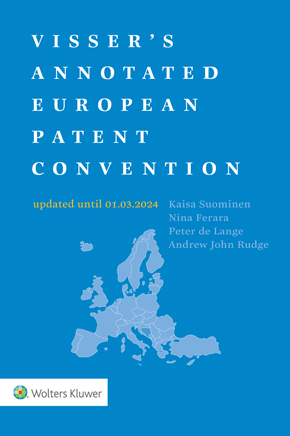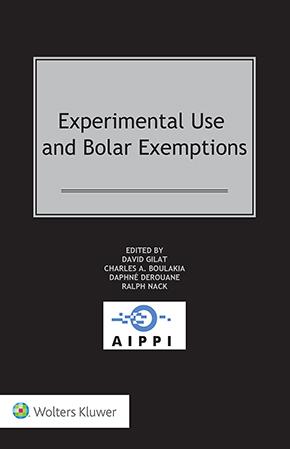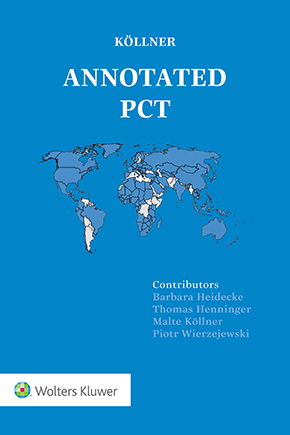Prior Public Disclosure in Claydon Yield-O-Meter v Mzuri: a Dangerous Precedent
June 17, 2021
On 22 April 2021 the Intellectual Property Enterprise Court (IPEC) gave a judgement in Claydon Yield-O-Meter v Mzuri, a UK case on patent invalidity because of prior disclosure. As is known, in order for an invention to be considered new under Section 2(2) of the UK’s Patents Act 1977, it must not form part of ‘the state of the art’, i.e. all matter which is available to the public anywhere in the world in any manner, before the priority date.
It should be reminded that even if there is no one to observe the disclosure, just a possibility of prior public use being observed can rob an invention of its novelty. This principle was previously affirmed in Lux Traffic Controls Ltd v Pike Signals Ltd (1993). In that case, the invention related to a traffic signal light system. Before the filing date, field trials had been carried out by the applicant. The defendant argued that the invention had been made available to the public because a prototype had been used in public and it did not matter whether anyone observed the particular feature claimed by the patentee. It was held that the relevant claim of the patent was invalid for lack of novelty. Indeed, the court noted, a prototype was made available to a contractor and – if a skilled man had examined it – he/she would have seen how it worked. Whether such person examined it did not matter. To back up this argument the court pointed out that a book on the library shelf may be deemed a prior disclosure even if no one has actually ever opened and read it.
Background and decision in Claydon Yield-O-Meter v Mzuri
Claydon Yield-O-Meter Limited (‘Claydon’) was the claimant. Mzuri Limited (‘Mzuri’) and Christopher Martin Lole (sole director of Mzuri) were the defendants. The two companies are both manufacturers and sellers of agricultural equipment. Mr Jeffrey Claydon, CEO of Claydon, to whom the patents were granted, appeared as a third party to the dispute. Claydon filed a case against Mzuri claiming infringement of both its UK and European patents. The patents protected a seed drill, which is attached to tractors for precisely sowing seeds. The inventor, Mr Claydon, tested the invention prototype in his farm for ten hours over two days, before filing for the patents. There was a six-feet tall hedge surrounding the farm and the hedge had several gaps from where anyone could peep into the field. Mzuri contended that Claydon’s prototype could have been seen by anyone from the footpath to which the public had access, providing enough information to enable an understanding of the invention.
Muzri therefore filed a counterclaim for revocation of both the UK and European patents for lack of novelty due to public prior use. Mr Claydon declared that due to his prior experience of patents, he knew prior public disclosure of his invention could threaten his ability to patent it. He further explained that such experience made him take necessary measures; from the vantage point of his tractor cab, he could see anyone in the vicinity before they could even have a chance to glance at the field so if he had seen anyone, he would have moved away, making the drill prototype not visible to anyone.
The Court held Claydon’s patent invalid because of prior public disclosure. Judge Hacon distinguished E. Mishan & Sons Inc. v. Hozelock, where it was held that a series of tests of the patented hosepipe by the inventor in his garden did not amount to prior public disclosure, as the inventor was well aware of the danger. Indeed, if the inventor had become aware of someone watching him, he would have taken the hosepipe somewhere else where it would be out of sight to everyone. As mentioned, Judge Hacon distinguished such case and found that even if the inventor had been aware of someone passing by, he would not have been able to conceal it due to the (big) size of the seed drill.
Practical and legal issues
This decision raises the practical question how inventors can confidentially test and develop large inventions outdoor at their own premises. One may note that the bigger the machinery which incorporates the invention, the more difficult it is to test and develop the technology in question.
Also, decisions like Claydon Yield-O-Meter v Mzuri may be detrimental to specific industries (such as agricultural machinery) where innovation processes require large scale experiments involving big products. One may even go as far as claiming that this would contravene the principle of non-discrimination based on the field of technology under Article 27 TRIPS, which states that patents shall be available and patent rights enjoyable without discrimination as to field of technology. In other words, inventions incorporated in bigger products might de facto be discriminated vis-a’-vis inventions related to smaller ones.
The concept of de facto discrimination was clarified by a 2000 WTO Panel’s report in Canada – Patent Protection of Pharmaceutical Products (para 7.101):
- "[D]e facto discrimination is a general term describing the legal conclusion that an ostensibly neutral measure transgresses a non-discrimination norm because its actual effect is to impose differentially disadvantageous consequences on certain parties, and because those differential effects are found to be wrong or unjustifiable”.
It seems to us that this fits into the Claydon Yield-O-Meter v Mzuri scenario. Judge Hacon’s finding in the ruling looks neutral as it is not formally addressed to a particular category of inventors or fields of technology. Yet, its actual effect is to impose negative consequences on inventors within industries which require large scale tests: a finding which is therefore difficult to justify and consider fair.
You may also like















MaxDrei
There is so much wrong with this decision, I hardly know where to start. Pity it will very likely not go to appeal. I always thought that English style fact-finding, built around cross-examination of witnesses, was superior to anything in the civil law world, and thereby is a gift to the world because it keeps the parties "honest" when litigating the same issue in civil law jurisdictions. But here, the fact-finding was (in my eyes) so lamentable, it screwed the whole case, on the law. I think the judge had no choice, but if the witness evidence had been of higher quality, the judge could have reached the right result in a much less controversial way. Perhaps it is because this case was on the "cheap and cheerful" litigation path of England, the "Enterprise" court. Perhaps EPO-style fact-finding works better in a poor man's court? In a no expenses spared, High Court action, perhaps the witness examination might have been of higher quality. Interesting is the difference between witness "preparation" for x-exam, in the UK and in the USA. In England, such "preparation" is beyond the pale, and therefore often fatal, but in the USA it is fatal NOT to do it, and very thoroughly. Here, in this case, a modicum of "preparation" might have contributed to getting to the right result. My guess is that it is not just me but also the witnesses that were left disappointed. I should say that I grew up on a farm. My quarrel with the evidence concerning the "disclosure" in the field is that, from a distance, an observer (even an expert) would not have been able to distinguish the machine being trialled from the machine illustrated in the EPO's starting point prior art, an old US patent on a seed drill. The only difference from the prior art was the relative positions of two delivery pipes, respectively for seeds and fertilizer, near the points of the respective alternate tines, underground when the drill is working. So the notional observer, peering through the hedge a hundred yards away, would not have been able to say whether the machine on trial was an embodiment of the prior art, or something somehow different from the long-known machine. The distinguishing feature of the claim in suit is discernable only upon close inspection, inches away from the machine. See the parallel EPO opposition proceedings, for how this case should have been decided. While I lament a sad day for fact-finding, England-style, I leave others, more learned than me, to say whether, on the facts derived from the witness testimony, the judge got the law right.
Attentive Observer
I would have thought that what is disclosed in such a situation is merely the outline of the machinery and not how it is actually built up and how its different internal elements cooperate. Following this logic, when a large piece of machinery is exposed in the courtyard of a manufacturer, and the door is open or the fence is not a closed one, then the whole machine was made publicly available. This cannot be true. Another example is when a test car of manufacturer is driving through the streets, does it mean that any device used in this test car has been made available to the public? it is a good joke, no more. It is to be hoped that the court of appeal and, should necessity arises, the UKSC will bring an end to this very artificial way of looking at a disclosure. If the test equipment is sold or made available to third parties without a confidentiality agreement, then I can accept the reasoning. With due respect, is the judge having drafted this decision sitting in an ivory tower?